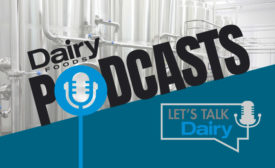Operations
Congress should support raising the truck weight limits on the interstate
An increase in the allowable truck weight limit would be particularly beneficial to the dairy industry.
September 30, 2024
What is the outlook for U.S. Dairy exports?
Growth of U.S. milk production weak, stronger in Europe.
September 27, 2024
EQUIPMENT SHOWCASE
Equipment suppliers highlight the latest advancements in detection and inspection systems
September 26, 2024
The latest about labeling, shrink sleeves and printing systems
Selecting the optimal items in this space can be challenging.
September 25, 2024
What’s the impact of Avian flu on dairy farms?
H5N1 influenza strain found in 190 dairy herds in 14 states, vaccines in cattle authorized.
September 10, 2024
Episode 45 — The Role of AI in Metal Detection & Food Protection
Fortress Technology expert discusses inspection detection systems and the pivotal role of data collection.
September 9, 2024
EQUIPMENT SHOWCASE
Equipment suppliers highlight the latest innovations in conveyors and palletizers
August 30, 2024
Stay ahead of the curve. Unlock a dose of cutting-edge insights.
Receive our premium content directly to your inbox.
SIGN-UP TODAYCopyright ©2025. All Rights Reserved BNP Media.
Design, CMS, Hosting & Web Development :: ePublishing











